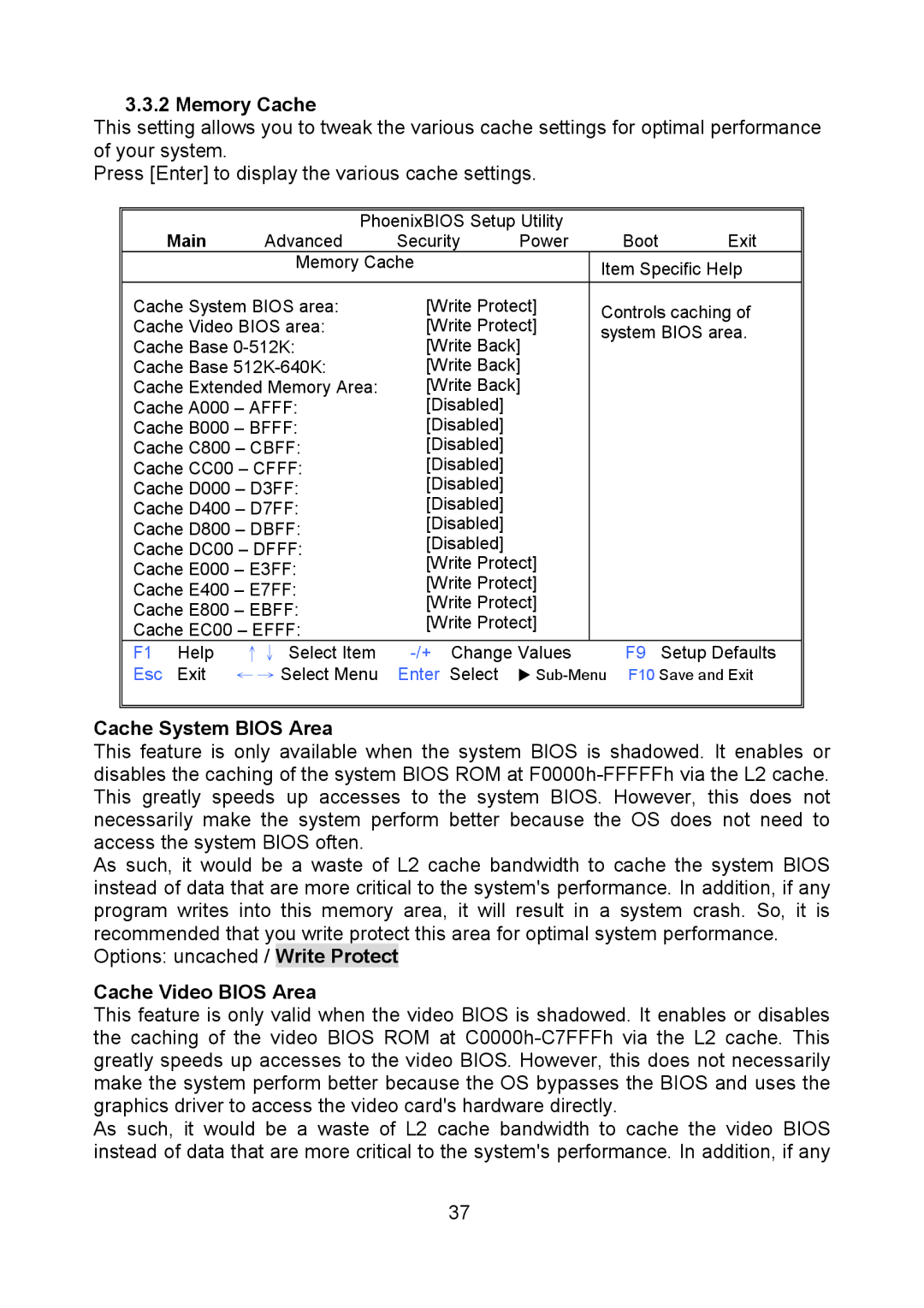3.3.2 Memory Cache
This setting allows you to tweak the various cache settings for optimal performance of your system.
Press [Enter] to display the various cache settings.
| Main | PhoenixBIOS Setup Utility |
|
|
| |||
| Advanced | Security | Power |
| Boot | Exit | ||
|
| Memory Cache |
| Item Specific Help | ||||
|
|
|
|
| ||||
Cache System BIOS area: | [Write Protect] | Controls caching of | ||||||
Cache Video BIOS area: | [Write Protect] | |||||||
system BIOS area. | ||||||||
Cache Base | [Write Back] | |||||||
|
|
| ||||||
Cache Base | [Write Back] |
|
|
| ||||
Cache Extended Memory Area: | [Write Back] |
|
|
| ||||
Cache A000 – AFFF: | [Disabled] |
|
|
|
| |||
Cache B000 – BFFF: | [Disabled] |
|
|
|
| |||
Cache C800 – CBFF: | [Disabled] |
|
|
|
| |||
Cache CC00 – CFFF: | [Disabled] |
|
|
|
| |||
Cache D000 – D3FF: | [Disabled] |
|
|
|
| |||
Cache D400 – D7FF: | [Disabled] |
|
|
|
| |||
Cache D800 – DBFF: | [Disabled] |
|
|
|
| |||
[Disabled] |
|
|
|
| ||||
Cache DC00 – DFFF: |
|
|
|
| ||||
[Write Protect] |
|
|
| |||||
Cache E000 – E3FF: |
|
|
| |||||
[Write Protect] |
|
|
| |||||
Cache E400 – E7FF: |
|
|
| |||||
[Write Protect] |
|
|
| |||||
Cache E800 – EBFF: |
|
|
| |||||
[Write Protect] |
|
|
| |||||
Cache EC00 – EFFF: |
|
|
| |||||
|
|
|
|
| ||||
F1 | Help | ↑↓ Select Item |
| F9 | Setup Defaults | |||
Esc | Exit | ← → Select Menu | Enter Select | X | F10 Save and Exit | |||
|
|
|
|
|
|
|
| |
Cache System BIOS Area
This feature is only available when the system BIOS is shadowed. It enables or disables the caching of the system BIOS ROM at
As such, it would be a waste of L2 cache bandwidth to cache the system BIOS instead of data that are more critical to the system's performance. In addition, if any program writes into this memory area, it will result in a system crash. So, it is recommended that you write protect this area for optimal system performance.
Options: uncached / Write Protect
Cache Video BIOS Area
This feature is only valid when the video BIOS is shadowed. It enables or disables the caching of the video BIOS ROM at
As such, it would be a waste of L2 cache bandwidth to cache the video BIOS instead of data that are more critical to the system's performance. In addition, if any
37
